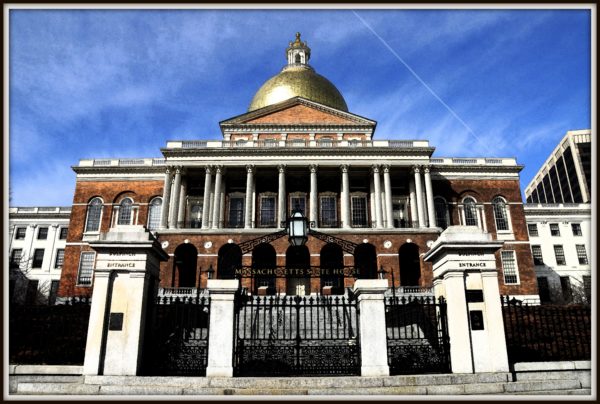
With three months to go before the 2020 election, North Carolina Democrats could be forgiven some tremors of optimism. Joe Biden has a consistent lead in the state polling average, according to RealClearPolitics. Cal Cunningham’s lead over Sen. Thom Tillis has risen to a 9.5 point average. And Gov. Roy Cooper is cruising to a double-digit reelection victory over Dan Forest. In the state legislature, Republicans face a formidable challenge in holding the state House and Senate. In all, 2020 is telegraphing a potential earthquake in state politics after a decade of gerrymandered Republican domination.
There are some obvious reasons for this Democratic trend — namely, the chaotic administration of Donald Trump and the ongoing horror show of COVID in North Carolina. But there’s another that is more fundamental, more significant, and largely overlooked: the scale and rapid change in the North Carolina electorate.
According to the North Carolina State Board of Elections, North Carolina has added nearly 400,000 registered voters in just the last 45 months since the 2016 election. That’s well more than double Donald Trump’s winning margin in the state. The benefits of this growth have not accrued equally between parties. These new voters help explain Democrats’ strong performance in the top-of-ticket races this year — and also tell us a lot about the future of North Carolina politics.
One of the clearest patterns in looking at the growth of new voter registration is their geographic distribution. North Carolina’s cities are capturing a large majority of the growth. Sixty percent of new voters since 2016 — over 234,000 of them — are in one of the “Big Five” counties: Wake, Mecklenburg, Guilford, Forsyth and Durham. This underscores how much bigger our state’s “big counties” are, in terms of population, than the small ones. The “Big Five” counties alone account for a full one-third of the state’s total electorate. In fact, 50% of all of the state’s voters are contained in just 11 counties, all of them major cities or suburbs. There are about as many voters in Guilford County alone — which itself is half the size of Mecklenburg — as there are in the bottom 31 counties, combined.
Besides where they’re located, another big trend in new voter registrations is the party registration and racial categories they choose. The overwhelming majority of new voters since 2016 have registered as “unaffiliated” — not Democrats or Republicans. In fact, neither party has a good story to tell about growing its ranks. But this conceals some interesting sub-trends at the county level: Republicans have lost thousands of registrants in the “Big Five” counties while adding them in rural ones, and Democrats have seen the exact opposite. Rural areas are becoming slightly more Republican at a slower pace than urban ones are becoming more Democratic, but both parties are facing a statewide electorate that is quickly trending more independent.
Whites are still a clear majority of North Carolina voters, but a smaller one than ever before. Since 2016, whites have continued a long-term decrease as a percentage of total voters, slipping 3.7 percentage points. This is true across urban, suburban and rural counties alike. Latinx voters posted small gains, particularly in the Big Five counties. But the biggest shift was the racial category of “Other.” Fully 89% of all new registered voters since 2016 have listed themselves as “Other.” It is impossible to know exactly who this category contains, though we can make some educated guesses. Presumably, some voters have switched their registrations from one party to unaffiliated, and in doing so, have also switched their racial category. But it very likely also contains a huge number of Latinx voters, for whom there is no racial category, but instead an Ethnicity box, on the North Carolina voter registration form.
In sum, voter registration trends show us that North Carolina’s urban centers are adding more voters far faster than its vast number of rural ones. Smaller, rural counties, and the voters in them, are changing only very slowly. North Carolina’s electorate is quickly growing more urban and suburban, more politically independent, and much more multiracial.
What can these trends tell us about the future of North Carolina’s politics?
Our state’s electorate reflects not only a large divide between urban (and suburban) counties and rural ones, but also the deep racial segregation of our state’s past and present. Racial polarization in politics is nothing new in North Carolina, the home of politicians like Jesse Helms. Unfortunately, it does not seem to be getting any better — if anything, it may be getting worse.
In its near-decade of dominance in state politics, the North Carolina Republican Party has made its signature achievement the nation’s most aggressive, and racially-based, partisan gerrymander. It has spent years fighting for voter suppression laws that “target African-American voters with surgical precision.” And it would appear that voters have understood the message. Still, in 2020, there is not a single Republican legislator of color in the General Assembly. (People of color make up 45% of the Democratic caucus.)
This is simply not a sustainable long-term trajectory for the Republicans. Our democracy is healthiest when we have two (or more) parties all equally invested in the future of North Carolina — including all of its residents. But we do not have that today. Instead, we have one deeply multiracial party and another that is increasingly reliant on a shrinking pool of white voters that elect only white politicians. It is not hard to read into that path a cold-blooded political logic for suppressing the votes of non-whites.
For the health of our democracy, it is imperative for North Carolina Republicans to change their tune on these issues. Due to their gerrymandering, our state government already amounts to white minority rule: in 2018, Democrats won the most votes for the legislature but came nowhere close to commensurate governing power. That, alone, is poisonous to the legitimacy of our system of government. But given the long-term trends of the state’s electorate, Republicans should also consider shifting out of pure self-interest. If they want to keep winning elections, then they must meet voters where they are. Time will tell, however, if their current voters will permit them to budge.
Blair Reeves is the founder of the Long Leaf Pine Slate, a progressive political advocacy organization in North Carolina. Learn more at LongLeafPineSlate.org.


